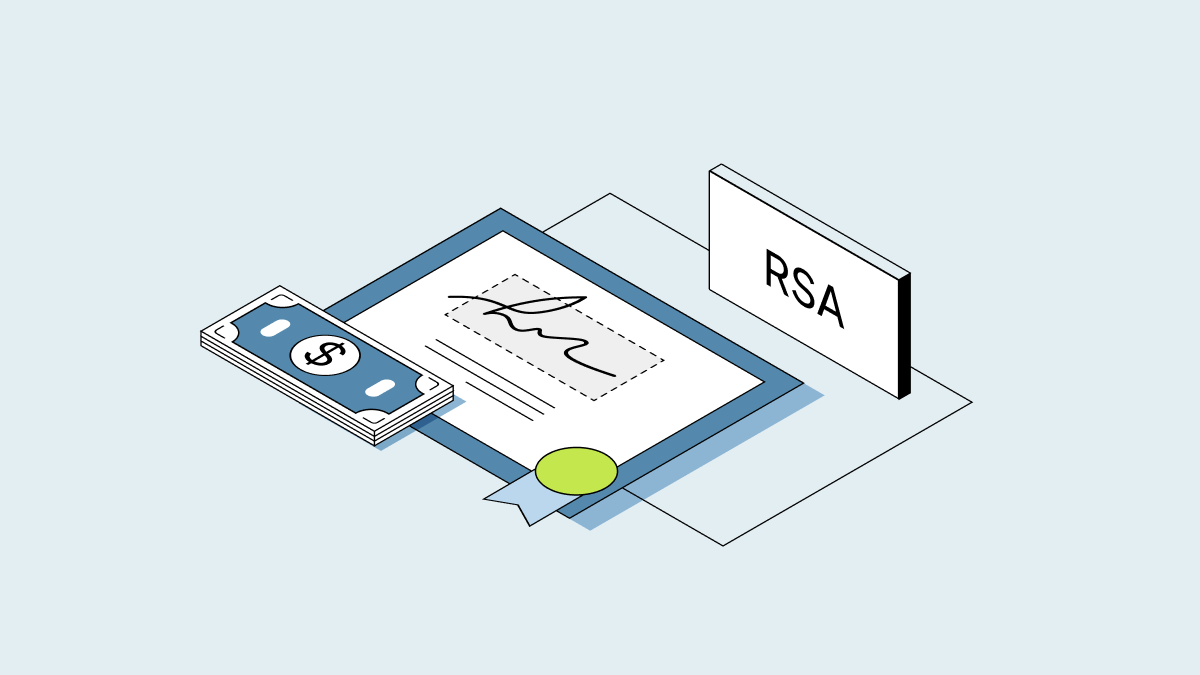Not long ago, record valuations were the norm—investors couldn’t get checks out to founders fast enough. As the fundraising environment continues to come back down to earth, companies may need to consider the possibility of a down round.
What is a down round?
A down round is when a company raises a financing round of venture capital funding and the pre-money valuation of the company is lower than the post-money valuation of the previous round. Down rounds are different from bridge rounds, which help founders extend their last round of fundraising.
When a company needs fresh funding, a down round is often the elephant in the room. When the economy is strong, down round financing can be a signal that your growth is slowing, which may prompt less trust in the viability of your company. It can also hit hard on employee morale and make recruiting and retaining people more difficult.
But down rounds don’t necessarily mean doom and gloom, especially in down economies. As the market continues to adjust, the perception of down rounds might be changing.
Why are down rounds so relevant right now?
In 2022, the market looked for a new equilibrium after a couple of years of record-high fundraising. Over the past decade, the market has been friendly to founders, but now the ball is in investors’ courts. Founders of private companies will have to make more concessions to get funding.
In Q3 of 2022, 12.5% of fundraises on Carta were down rounds on a pre-money basis. This is a bump from 5% in Q1 of 2022, and higher than the 10.6% average from Q1 2015 to Q3 2022. We may see the down round trend continue as companies that might have put off fundraising accept that they’ll have to raise, despite the unfriendly economic environment.
Down rounds can be an opportunity for founders to get their metrics and path to profitability in order. Joe Percoco, CEO and founder of Titan Global Capital Management, said at the 2022 Carta Equity Summit that changes in the investment landscape are healthy because “they force you to get fitter than you otherwise would’ve if you were just purely in a boom cycle. So companies are now sort of getting fitter. They’re rethinking distribution, rethinking how they grow, ensuring that the at-scale unit economics of the business have potential.”
What triggers a down round?
A down round might be triggered by an internal problem at the company, like a lawsuit, revenue miss, or competitive pressure. In those cases, investors that still have faith in the company’s future invest at a more realistic valuation to help the company overcome the issue and get back on track.
But the impetus for a down round might just be a declining market. When the public markets are flashing red, private market valuations can follow; sometimes, certain sectors can attract new investor scrutiny (think crypto in 2022). Any company that needs to raise in this environment will have to accept the price the market is willing to pay—making down rounds necessary even for some companies that have grown and hit the milestones investors look for.
In other words, a down round doesn’t have to signify that something is terribly wrong at your company. Instead, it can mean that you’re fundraising in a time when valuations are taking a hit and investors are less risk-tolerant. While no company wants a down round, if you need to fundraise during economic uncertainty, below we explore how companies get to the down round and get through it.
How to avoid a down round
Founders can avoid a down round by decreasing cash burn. This can mean reducing the size of the workforce, focusing only on the most impactful projects, or cutting unnecessary vendors. But even doing these things quickly can’t always free up enough cash.
Have a creative way to finance
Founders who need funding in a down market can first try to get creative. There are multiple ways to fund your company. Some less common funding options are:
-
Tranche financing: Investors release funds in parts over time as your company hits certain milestones versus one lump sum.
-
Venture debt: A bank loan for companies between venture capital funding rounds that doesn’t dilute shareholders.
-
Other loans: Some companies might qualify for small business loans with a longer payoff period.
-
Equity crowdfunding: Some crowdfunding websites specialize in fundraising for businesses and can get the pitch out to a large group of general investors (unaccredited investors included).
What to know when raising a down round
If you’ve exhausted other options and a down round allows you to stay in business, here’s what you need to know.
What are your investors looking for?
Investors are always looking for efficient companies with:
-
Potential for strong profit margins
-
Controlled cash burn
-
Low customer-acquisition costs
This is especially true in down economies. When risk tolerance is lower, investors need to see a healthy track record and path to profitability to make later-stage investments. Early-stage founders are more insulated, as investors typically take on more risk with companies that are just starting out. But they still look for a business idea with a lot of potential and experienced founders to carry it out.
How might investor rights and preferences change?
The nuts and bolts of raising a down round are the same as raising any round of fundraising, but the process differs significantly when you get to negotiation around investor rights and preferences.
Investor-friendly rights and preferences are measures that make sure investors get a return on their investment even if your company doesn’t have a lucrative IPO or acquisition. But excessive terms can severely dilute existing stockholders—and even make their holdings worthless.
Rights and preferences that investors might ask for include:
-
Liquidation preferences: The multiple of their investment that an investor would be paid back if the company closes down, sells, or IPOs (often expressed as 1x, 2x, or 3x)
-
Participation rights: The percentage payout an investor would get if the company IPOs or is sold
-
Divided rights: The division of proceeds from an IPO or sale among common stock and preferred stockholders
-
Right of first refusal: The right to buy a certain number of shares of the company in the future before they can be offered to anyone else
-
Pay-to-play: Requirements for investors to participate in future rounds of financing to maintain their ownership percentage
-
Conversion ratio: How many common stock shares investors can exchange their preferred shares for if they choose
Jessica Peltz-Zatulove, founding partner at VC firm Hannah Grey, sees the trend swinging in favor of investors. “We’ve definitely started to see more teeth coming out at the growth stage of 2x, 3x liquidation preferences, participation rights, preferred pay-to-play clauses, recap[italizations]. Things that can really impact the founders and impact early-stage investors,” she said at the 2022 Carta Equity Summit.
As always, read all the fine print to make sure you understand the future implications of any funding options you have. Decide which investor-friendly rights and preferences are worth it to avoid bankruptcy. What are you willing to give up to stay in business? Go over all term sheets with legal counsel so that you understand the future implications of getting the capital you need today.
How will the down round affect stakeholders?
Raising a down round negatively affects stakeholders who purchased or were granted stock when the share price was higher. Equity holders are diluted when a company issues more shares and decreases their ownership percentage. During a down round, dilution is on the minds of all stakeholders, who are wondering how a lower price per share will impact the value of their existing equity.
Previous investors
When considering a fundraise, you’ll need to check the terms from previous rounds.
Preferred stockholders may have anti-dilution provisions included in the legal terms of prior rounds.
If your company’s valuation goes down in a subsequent round, an anti-dilution provision lets the investor buy more shares at the new lower price to maintain the percentage of ownership they had before the valuation decreased.
For investors without anti-dilution protections, their ownership percentage may go down significantly, as could the value of their investment. Existing investors that are participating in your down round may negotiate terms to update these protections to improve their outcome if your company exits or closes down.
Employees
Down rounds significantly dilute any common-stock holder. This is the typical share class offered to employees.
Employees who have already exercised their stock options may have done so at a higher strike price than the current price per share.
Employees who haven’t yet exercised their stock options may find that the price per share of their grant is higher than the current price (also known as being “out of the money” or “underwater”). The stock can become worthless if the price doesn’t rebound. If the fair market value (FMV) stays low, employees might not choose to exercise their options, releasing the equity back into the option pool.
Companies can take action to lighten the burden on employees.
What to do after a down round
After a down round, you’ll need to manage cash burn to scale your business. If your growth rate is lower than it used to be, make a conservative budget and use a scenario modeling tool so that you don’t have to fundraise too soon in the future.
How to help employees after a down round
One of the most important things you can do after a down round is to put your employees at ease. You can:
-
Reward your employees with new equity grants to make up the loss in share value.
-
Give your employees a cash payout for their stock options. This offers them immediate liquidity. You can then choose to issue lower priced shares to employees or free up space on your cap table for investors who might only want to invest if they can own a larger percent of your company.
-
Restructure stock options by repricing and exchanging them. With option repricing, you void existing grants and issue new ones with a lower strike price that matches the current FMV. The vesting period for these fresh grants varies by company.




